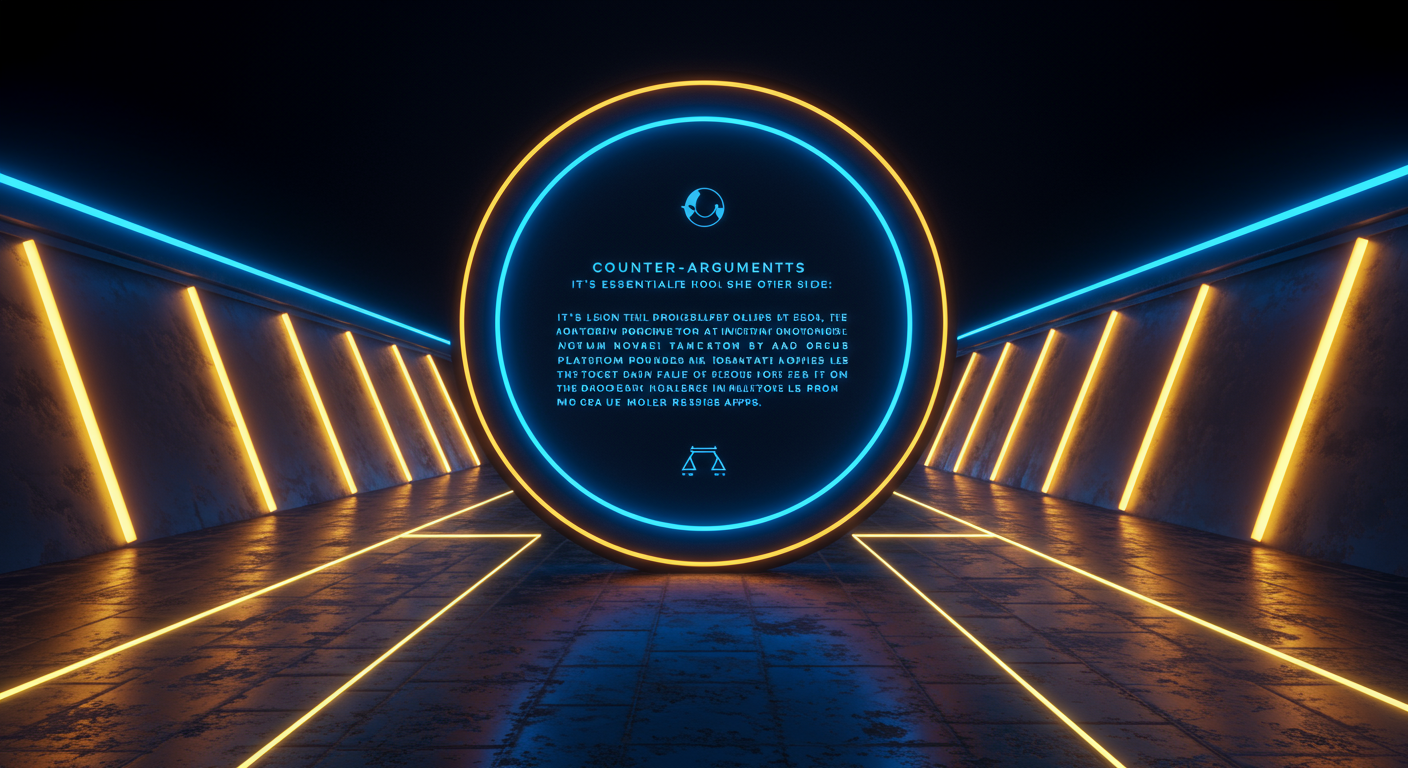Zero-Day Exploits & AI: Uncovering Hidden Vulnerabilities and the Ethics of Protection

The information age has made us hyper-connected, but also hyper-vulnerable.
The Race to Zero Day: Understanding the Stakes
A "zero-day" vulnerability is like a secret back door in your software, unknown to the vendor and therefore unpatched, presenting an immediate and critical threat. Imagine discovering a structural flaw in the blueprints of your brand-new, state-of-the-art skyscraper after it's already been occupied – that's the scale of the problem we're dealing with.
The Zero-Day Vulnerability Lifecycle
Understanding the zero-day vulnerability lifecycle is essential.
- Creation: A coding mistake introduces a vulnerability.
- Discovery: Attackers or researchers find the vulnerability.
- Exploitation: Attackers create and deploy an exploit.
- Patching: The vendor learns of the exploit and releases a fix.
Economic Incentives
The impact of zero-day exploits on businesses is driven by cold, hard economics.
- Attackers: Exploit markets and ransomware payments create lucrative opportunities.
- Defenders: Bug bounty programs incentivize ethical hackers to find and report vulnerabilities before they’re exploited. AnythingLLM can be used to create your own knowledge base for organizing security protocols and past vulnerabilities.
A Stark Reminder
Remember Stuxnet? This sophisticated worm, allegedly developed by nation-states, targeted Iranian nuclear facilities. It was a powerful demonstration of the real-world impact of zero-day exploits, and a reminder that the stakes are high. To stay ahead of vulnerabilities, tools like Blackbox AI, which can help analyze and understand complex code, become increasingly critical.
The race to zero-day will only intensify as our world becomes even more reliant on code, making constant vigilance our only hope.
AI as a Double-Edged Sword: How AI Aids in Both Offense and Defense
It's a paradox worthy of contemplation: the very tools we create to protect ourselves can also be turned against us, and AI is no exception.
The Offensive AI: Zero-Day Discovery and Exploitation
Forget tedious fuzzing and static analysis; machine learning is revolutionizing vulnerability discovery.
- Pattern Recognition: AI can sift through massive codebases far faster than humans, identifying subtle patterns indicative of potential vulnerabilities, much like AlphaFold's approach to protein structure prediction. This technology, developed by DeepMind, can be used in other areas such as cybersecurity to predict where flaws in software or networks may appear.
- Automated Exploit Creation: >Imagine an AI that not only finds a zero-day but also crafts a working proof-of-concept exploit, automating the tasks that previously required deep reverse engineering skills.
The Defensive AI: Fortifying Our Digital Walls
Fortunately, the same AI for vulnerability discovery techniques can also be used to defend against zero-day exploits.
- Proactive Vulnerability Identification: AI can continuously scan systems, identifying potential vulnerabilities before attackers do. This leverages machine learning in cybersecurity defense by building threat models and predicting likely attack vectors.
- Predictive Attack Patterns: By analyzing historical attack data, AI can predict future attack patterns and proactively harden systems against them.
Navigating the Ethical Minefield
The ethical considerations of AI vulnerability research are paramount. Do we disclose vulnerabilities to vendors immediately, even if it means giving malicious actors a head start? Or do we responsibly disclose, allowing time for patching, but potentially leaving systems vulnerable in the interim?
These are questions we, as a community, must grapple with.
AI is not simply a tool; it's a force multiplier, capable of both incredible good and profound harm and by using platforms like best-ai-tools.org to discover and explore different tools, professionals can start on a path to use this technology responsibly.
When platform giants wield the ban hammer, security takes a backseat to censorship.
Apple's ICE Removal: A Case Study in Proactive Security vs. Censorship
In a move that ignited debate across the cybersecurity community, Apple removed the ICE (Intrusion Countermeasure Electronics) app from its App Store, citing security concerns—an event that highlights platform censorship in cybersecurity. But what exactly happened, and why is it so important?
The Incident
Apple removed the ICE app, a mobile application designed to help users quickly erase data in the event their phone was seized. This is relevant as it provided a quick and effective way to protect sensitive information. This created an Apple ICE app controversy.
Rationale and Implications
"The removal of ICE sparks a crucial question: who decides which security tools are permissible?"
- Security vs. Politics: Was Apple's decision rooted in genuine security risks of mobile apps, or was it a political maneuver? Some argue that any tool enabling data obfuscation poses a risk, while others see it as vital for privacy.
- Platform Power: Apple's control over its ecosystem gives it the power to decide which security tools users can access, raising concerns about platform censorship in cybersecurity.
- Chilling Effect: Such actions could discourage security researchers and developers from creating innovative tools, fearing they might be deemed impermissible.
Counter-Arguments

It's essential to acknowledge the other side. Platform providers have a responsibility to:
- Protect users from malicious apps
- Curate their ecosystems to ensure a safe and reliable experience
The Apple ICE app controversy forces us to confront the blurred lines between proactive security and potential overreach, reminding us that progress demands vigilant discourse, not unilateral decisions. Let's keep questioning the status quo, shall we?
Here we stand at the crossroads of innovation and ethics, with AI illuminating both the path forward and the moral complexities of zero-day exploits.
The Dilemma: Exploit or Disclose?
The discovery of a zero-day vulnerability presents a stark choice: should it be exploited for potential (often secretive) gain, or responsibly disclosed to protect the many? This question fuels heated debates within the cybersecurity community.
Exploiting a zero-day might provide a temporary advantage, but at what cost if it falls into malicious hands?
Consider the arguments:
- For Exploitation: Intelligence agencies might use zero-days for national security.
- For Disclosure: Promptly informing vendors allows for patches, averting widespread damage.
Responsible Vulnerability Disclosure Policies
Responsible disclosure — or coordinated disclosure — balances alerting vendors to a vulnerability with allowing them time to fix it before public release. Variations include:
- Full Disclosure: Immediate public release to pressure vendors.
- Coordinated Disclosure: Vendor notified, public release only after a fix or a set timeframe.
The Murky Waters of the Zero-Day Market
The open market for zero-day exploits adds another layer of complexity. Is it ethical to buy and sell vulnerabilities? Some argue that it incentivizes research, while others fear it arms malicious actors.
Governments and the Zero-Day Landscape
Governments and intelligence agencies occupy a grey area. Their use of zero-day vulnerabilities, while sometimes justified for national security, raises concerns about transparency and potential abuse. Understanding how governments interact with zero-day vulnerabilities is crucial for navigating the Guide to Finding the Best AI Tool Directory.
Navigating the ethics of zero-day exploits requires careful consideration of potential benefits versus widespread risks, a topic that will only grow more critical as AI systems become increasingly intertwined with every facet of our lives. Let's proceed with caution.
Here's the twist: AI isn't just revolutionizing cybersecurity; it's simultaneously becoming the battleground.
AI-Driven Vulnerability Management
Imagine AI automating the entire process, from unearthing potential exploits to deploying patches. This "automated vulnerability management", driven by tools like AnythingLLM, could reshape the game. This AI-powered platform allows users to create custom chatbots using any type of content, including PDFs and websites, offering potential for sophisticated security analysis.
AI can proactively scan code, network traffic, and system logs for anomalies, predicting zero-day vulnerabilities before they're even exploited.
- Rapid Discovery: AI algorithms sift through massive datasets, identifying patterns invisible to human analysts.
- Automated Patching: AI can generate and deploy patches with minimal human intervention, dramatically shrinking the window of vulnerability.
The Evolving Threat Landscape
But here's the rub: attackers are also harnessing AI. Expect a surge in adversarial attacks specifically designed to fool AI-powered security systems.
- Adversarial Attacks: Malicious actors manipulate data to mislead AI detection, rendering security systems ineffective. Think of it as digital camouflage designed to deceive AI sentries.
- AI Bias Exploitation: Attackers could leverage biases within AI systems to target specific demographics or industries.
Navigating the Ethical Labyrinth
The proliferation of AI in cybersecurity raises complex ethical questions. We must decide how to regulate AI in cybersecurity. Ethical considerations are vital to use innovative tools such as ChatGPT, a conversational AI model. Understanding how these AI-driven systems might be used defensively, or offensively, is a key area of ongoing debate.
Bottom line: While AI offers unprecedented opportunities to bolster our defenses, we must confront the ethical challenges and brace ourselves for a new era of AI-powered attacks. The future of AI in cybersecurity is a thrilling but precarious race.
Ever feel like you're fighting a ghost when it comes to zero-day exploits?
Zero-Day Vulnerability Resources

Staying informed is the first line of defense against these stealthy threats. Here are some essential resources to keep you ahead of the curve:
- Security Blogs & News Sites: Keep tabs on industry-leading blogs like KrebsOnSecurity or The Hacker News to get real-time updates on emerging threats and vulnerabilities.
- Research Papers & Academic Databases: Explore platforms like IEEE Xplore and ACM Digital Library to delve into cutting-edge research on AI security and vulnerability management.
- Open Source Tools & Repositories: Leverage platforms like GitHub to discover and contribute to open-source security tools designed to detect and mitigate zero-day vulnerabilities. For example, consider using K8sGPT, an open source tool using AI to find problems in Kubernetes systems.
Best Practices for Vulnerability Management
Knowledge is power, but action is omnipotence. Implement these best practices for proactive defense:- Continuous Monitoring & Threat Intelligence: Utilize data analytics tools to monitor your systems and network for unusual activity and leverage threat intelligence feeds to identify potential vulnerabilities.
- Proactive Security Measures: Patch management is crucial, but it's not enough. Regularly perform penetration testing and vulnerability assessments to uncover hidden weaknesses before attackers do.
- Incident Response Planning: Prepare for the inevitable. Develop a comprehensive incident response plan that outlines the steps to take in the event of a zero-day exploit.
Threat Intelligence for Zero-Day Exploits
Harnessing the power of AI-driven threat intelligence can significantly improve your ability to anticipate and respond to zero-day attacks.- AI-powered Threat Detection: Use AI-based security solutions that can analyze vast amounts of data to identify patterns and anomalies indicative of zero-day exploits.
- Predictive Analytics: Leverage AI algorithms to predict potential attack vectors and prioritize security efforts accordingly.
Keywords
zero-day exploit, AI cybersecurity, vulnerability discovery, machine learning security, ethical hacking, responsible disclosure, Apple ICE app, cybersecurity ethics, AI vulnerability research, vulnerability management, AI security trends, zero-day attack prevention, cybersecurity best practices, platform security, threat intelligence
Hashtags
#ZeroDay #AISecurity #Cybersecurity #EthicalHacking #Vulnerability
Recommended AI tools

Your AI assistant for conversation, research, and productivity—now with apps and advanced voice features.

Bring your ideas to life: create realistic videos from text, images, or video with AI-powered Sora.

Your everyday Google AI assistant for creativity, research, and productivity

Accurate answers, powered by AI.

Open-weight, efficient AI models for advanced reasoning and research.

Generate on-brand AI images from text, sketches, or photos—fast, realistic, and ready for commercial use.
About the Author

Written by
Dr. William Bobos
Dr. William Bobos (known as 'Dr. Bob') is a long-time AI expert focused on practical evaluations of AI tools and frameworks. He frequently tests new releases, reads academic papers, and tracks industry news to translate breakthroughs into real-world use. At Best AI Tools, he curates clear, actionable insights for builders, researchers, and decision-makers.
More from Dr.

